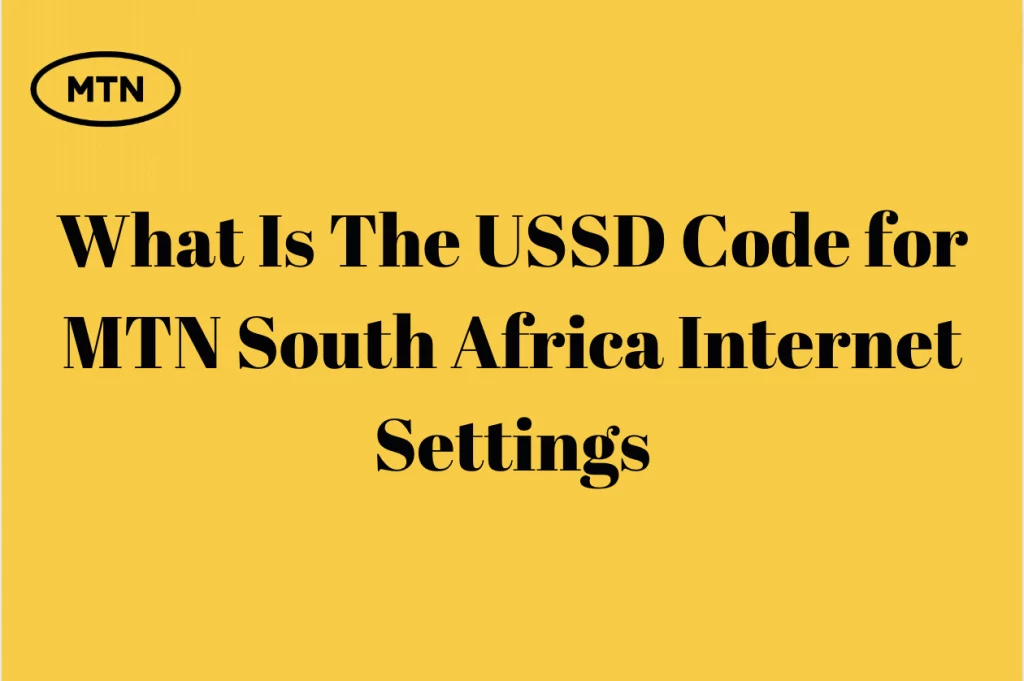MTN South Africa IPv4/IPv6 Number – This article is dedicated to letting you know more about the MTN South Africa IPv4/IPv6 number so if you happen to be someone who is looking for some answers in this regard, then kindly read this informative article to the end.
MTN IPv4 Number
To configure MTN’s Internet Protocol version 4 (IPv4) settings, you’ll need to input the specific code *99# into the relevant section and save the changes. This numerical sequence serves as the designated identifier for MTN’s IPv4, facilitating the proper establishment and customization of internet connection settings.
The process involves accessing the network settings on your device, locating the section designated for IPv4 configuration, and entering the provided code *99# to ensure seamless connectivity with MTN’s network. After inputting the code, it is crucial to save the changes to solidify the newly configured settings.
This straightforward procedure allows users to align their devices with MTN’s IPv4 specifications, ensuring a smooth and efficient internet connection experience. The use of the *99# code simplifies the configuration process, making it accessible for users to tailor their devices to MTN’s network requirements effortlessly.
What If I Leave The IPV4/IPv6 Section Blank
Ensuring the accurate configuration of Internet Protocol version 4 (IPv4) and version 6 (IPv6) settings is imperative for a seamless internet experience with MTN. When attempting to modify or customize these settings, it’s crucial to take note that leaving the IPv4/IPv6 section blank during the configuration process may result in the changes not being saved. This aspect of the configuration process is vital, and neglecting it could lead to connectivity issues.
Numerous individuals have encountered challenges when neglecting to input the relevant IPv4/IPv6 information, prompting them to seek out the specific numbers associated with MTN. If you find yourself here in search of the IPv4/IPv6 number for MTN, you are likely aware of the importance of accurately filling in these sections during configuration.
By providing the correct IPv4/IPv6 number, MTN ensures that your device is properly aligned with its network specifications. This number acts as a unique identifier, allowing your device to communicate seamlessly with MTN’s network infrastructure. It is important to recognize that overlooking the IPv4/IPv6 configuration step can lead to failed attempts at saving changes, resulting in potential connectivity disruptions.
As part of the configuration process, users are urged to enter the designated IPv4/IPv6 number into the relevant section and confirm the changes to guarantee that the updated settings are successfully applied. This proactive approach ensures that your device is optimized for MTN’s network, fostering a reliable and efficient internet connection. By understanding and adhering to these crucial configuration steps, users can navigate their device settings with confidence, minimizing the likelihood of encountering connectivity issues associated with incomplete or inaccurate IPv4/IPv6 configurations.
What Is IPv4 And IPv6
Internet Protocol version 4 (IPv4) and Internet Protocol version 6 (IPv6) are addressing schemes that facilitate the identification and location of devices on a network, enabling the proper routing of data packets across the internet. While both serve the fundamental purpose of addressing devices, they differ in their structure and the number of unique addresses they can support.
IPv4 which happens to be the older and more widely used protocol, greatly employs a 32-bit address format that allows for approximately 4.3 billion unique addresses. However, with the proliferation of internet-connected devices, this limited address space posed a challenge, leading to the development of IPv6.
IPv6, the successor to IPv4, utilizes a 128-bit address format, dramatically expanding the available address pool to an astronomical number (approximately 3.4 x 10^38). This abundance of addresses is crucial in accommodating the ever-growing number of internet-enabled devices, ensuring a sustainable and scalable addressing system.
For example, an IPv4 address looks like: 192.168.1.1. Each segment represents eight bits, and the entire address comprises four segments. In contrast, an IPv6 address looks like: 2001:0db8:85a3:0000:0000:8a2e:0370:7334. The longer hexadecimal format, separated by colons, signifies the increased address space of IPv6.
The transition from IPv4 to IPv6 is driven by the exhaustion of IPv4 addresses. IPv6 not only resolves the address scarcity issue but also offers additional features such as improved security and network efficiency. As the internet continues to expand, IPv6 adoption becomes increasingly critical for sustaining the growth of connected devices and ensuring a robust and future-proof addressing system.


